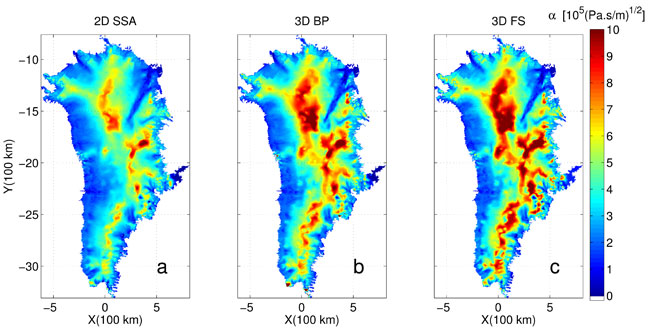Data Assimilation of Ice Flow Models in Antarctica and Greenland
By:
Eric Larour
Jet Propulsion Laboratory, NASA
| When: | Friday, March 02, 2012, 10:30 a.m. to 11:30 a.m. Join us for coffee beginning at 10:00 a.m. |
| Where: | Seminar Conference Room, 10100 Burnet Road, Bldg 196-ROC, Austin, Texas 78758 |
| Host: | Ginny Catania, UTIG |
Abstract
In order to better constrain projections of future Sea Level Rise, a better understanding of the evolution
of the mass balance of Antarctica and Greenland is necessary. Both continents have the potential to contribute
upwards of 2 m of Sea Level Rise in the next century, by losing ice mass to the oceans, through melting under ice shelves
and at icefronts, and through iceberg calving.
Ice flow models are improving in terms of the physics they capture, but key unknowns remain in the boundary conditions and material properties used to constrain them. For example, basal friction at the ice/bedrock interface remains poorly understood and parameterized. It cannot be measured, and must therefore be inferred using indirect measurements and inverse methods. Similarly, ice rheology is poorly constrained, which impacts ice shelf dynamics.
Here, we present results of simulations run using the JPL/UCI developed Ice Sheet System Model. This model relies on inverse control methods and InSAR surface velocities to invert for unknown parameters such as ice rheology or basal friction, at the continental scale. This allows for instantaneous spin-up of ice flow models, which can then be run for short term projections of mass balance. Future prospects for "predicting" sea level rise will be discussed, as well as challenges that still remain to be solved.





